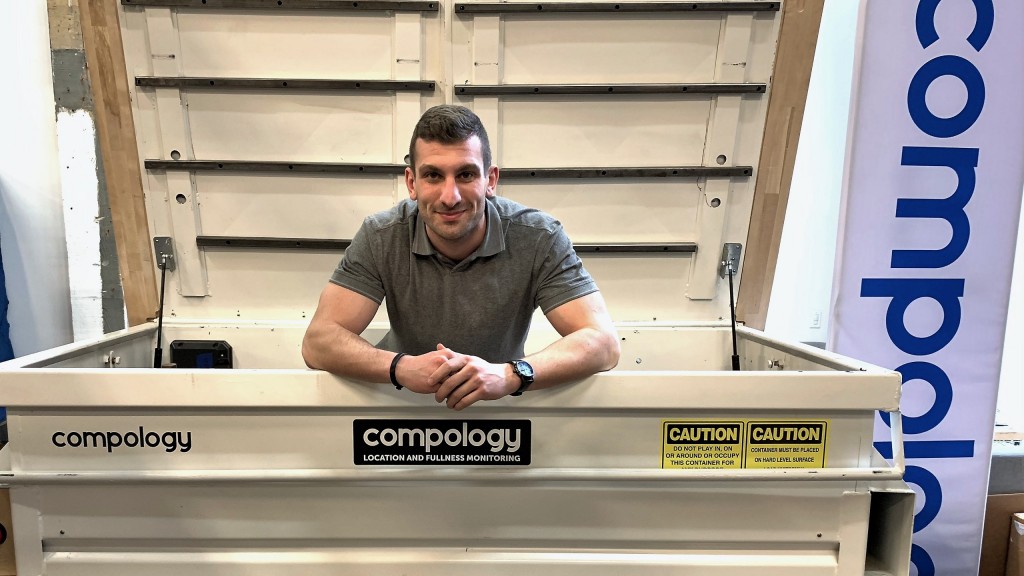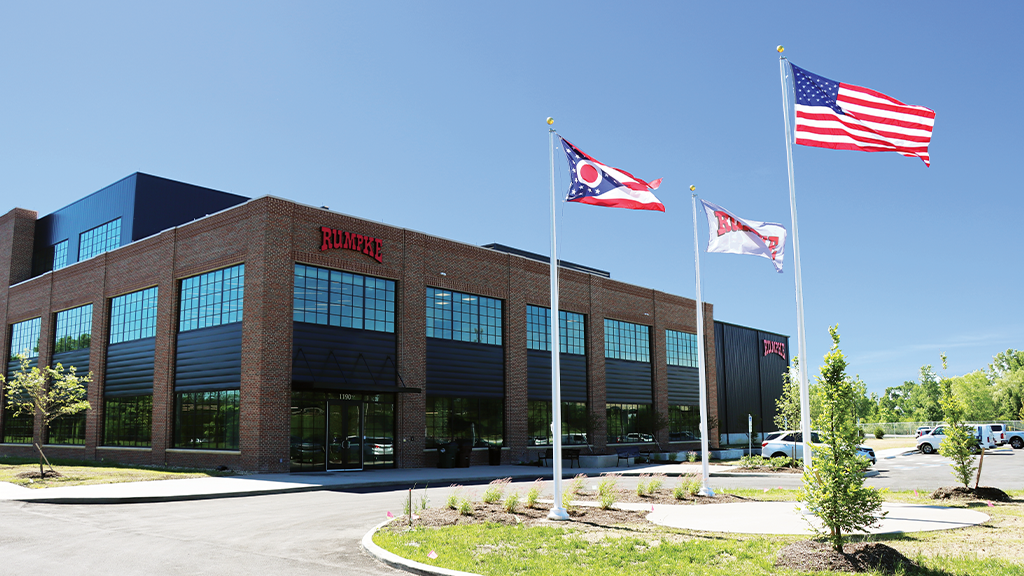Compology’s in-dumpster cameras and Contamination Score provide path to sustainable, efficient waste collection
Keeping Score on Contamination with CScore

Compology, based in San Francisco, got its start in the fall of 2013, with its first camera-based container monitoring system deployed in 2014 at the University of California in Santa Cruz. The system is designed to monitor container fullness and automate the process of container pickups between waste generators and haulers. Today, about a fifth of Compology's business is in Canada, with the remainder in the U.S.
"Our in-dumpster cameras bring a level of visibility that previously wasn't available," explains Jason Gates, Compology's founder and CEO. "We're tracking the location and we're taking pictures of dumpster contents, which we then automatically process to determine fullness by volume and identify contaminants."
CScore - standardizing contamination measurement
With recent changes to the global economy and a shift in recycling markets over the last several years, Gates says Compology started to hear many customers talking about the pains they were having with their recycling programs and how high levels of contamination in their containers were causing them to either increase the expense to process materials or be forced to send collections directly to landfills.
CScore (Contamination Score), Compology's latest add-on software module, is designed to help eliminate commercial container contamination. Compology dumpster cameras collect images of contents which are then analyzed using artificial intelligence (AI) to identify the number of pieces of contamination. A CScore is calculated (based on the number of pieces of contamination in a container, divided by the total volume of material) across any number of dumpsters or containers, over any time period. The closer the CScore is to zero, the cleaner the material.
The CScore is then provided to stakeholders, along with actionable recommendations, historical images, as well as location and fullness data, through Compology's web-based software (which can also connect to other software via their Application Program Interface (API)).
"Since we're able to remotely watch a container fill up over time, we can see the pieces of contamination all the way down at the bottom of the container, in the middle and at the top," explains Gates. "Then, we inform the client, for example, that there are five total pieces, or 12 total pieces, of contamination in that container. We've removed human error and bias from the process to provide a standardized way of measuring that the industry can rely on."
CScore's application is targeted specifically at commercial front-load or rear-load dumpsters between one and eight cubic yards. Gates says it's ideal for use by large waste management firms, in commercial recycling applications, for tracking containers used for commingled material, cardboard and organics.
"It's ideal for the companies who own the trucks and own the dumpsters, and is a tool to help reduce contamination," says Gates. "Municipalities also benefit from CScore because they can track contamination rates in their cities over time and use that information to provide targeted coaching and to enforce policy to decrease contamination. The system provides a lot of visibility and accurate data as to what is actually happening in every equipped container."
Gates emphasizes that artificial intelligence has a big part to play in the Compology system.
"All of the inner processing that we're doing is powered by artificial intelligence that we've built. We're taking images, just like you'd get from your cellphone, and using AI and machine learning to identify pieces of contamination in those images."
He says this applies across Compology system data collected as a whole. "Across all of the containers that we're monitoring, across all of our customers, we pull that data together on the back end to help improve the abilities of our system," he explains. "The more containers we're monitoring, the more customers that use us, the better the product gets for everyone who uses our system."
He adds that they now have some sizeable clients who have been up and running on CScore for a period of time. "There's one hauler that stands out to me, a relatively large customer. They have nearly 2,000 containers that they're tracking with us using CScore.
"In the first month of using our technology, they were able to reduce their amount of contamination by about 24 percent, and we expect that number to rise with targeted education and enforcement over time."
Education and enforcement
Typically, reducing the amount of contamination in a given recycling stream with the CScore system can happen in a few different ways.
"One is through highly targeted consistent outreach and coaching," Gates explains. "Not only are we automating the identification of contamination, we're automating the process for showing waste generators how not to contaminate. "It's not a novel concept - other people have been doing this for years. We're just automating it so it's scalable, affordable and even more effective.
"For example, we can show a sandwich shop business with hundreds of locations that 25 locations are consistently contaminating. We can then deliver messages through text or email with time-stamped pictures of the contamination as educational material to say, ‘here's what you should change about your behaviour so that you're not contaminating your container anymore.'
"It also greatly benefits haulers, recyclers and municipalities," he continues. "The haulers are going to get a cleaner recycling stream, which in turn reduces costs for recyclers in sorting and separation of materials and helps municipalities measure against diversion goals."
Compology also provides actionable data for enforcement. "We have found that a lot of contracts contain the ability to bill customers for contamination," he says. "So, rather than increasing rates across the board to subsidize the folks that are contaminating the most, CScore now allows haulers and regulators to bill those customers that are actually contaminating, for the actual amounts of contamination they are putting into the container."
He says by standardizing the measurement, it allows haulers and regulators to develop what they call a rubric. For instance, one count or less is forgiven, two to three counts is considered light contamination, which may have one billing rate, while four or more counts could have a billing rate that is higher.
"Our clients are even starting to change the routes of trucks based on contamination levels," he says. "If a container is too highly contaminated, our haulers can now take it off of a recycling route and put it onto a landfill garbage route.
"Cameras in containers combined with CScore provides the ‘story of contamination' by bringing consistent visibility and tracking through remote monitoring over an entire container fill-cycle."
He continues, "When conducting a waste audit, it's no longer just about manually opening the lid and seeing what material is sitting top, or requiring a driver to get out of the cab to look. It's really about being able to remotely see and understand what is going on with a given waste generator, and their behaviour over time using a central database of daily and historical data."
Building a data-driven future
Until recently, international recycling markets such as China have been willing to take highly contaminated materials at a relatively low rate. "Our industry built business models with the assumption that those opportunities were going to last forever," Gates says. "The reality now, with the Chinese recycling economy not accepting most recycled material from North America, is that the model has to change. I believe strongly that technology and artificial intelligence can be a tool to make a recycling model that is profitable and sustainable for a long time to come."
The ability to consistently and reliably collect data and make it actionable has become very important to this shift. Gates says while there are lots of different ways to collect data, Compology's focus is on providing visibility and more importantly, making sure that Compology presents data in an easily digestible way that makes taking action easy.
"I think there are many ways to collect data, and there are lots of different pieces of information you can look at," he says. "But it's really about taking that information and turning it into something that everyone can take action on - whether it's changing a route, delivering a new piece of education or using it to inform the writing of a new policy." RPN
This article was originally published in the January/February 2019 edition of Recycling Product News, Volume 27, Number 1.
Company info
1045 Bryant Street Suite 101
San Francisco, CA
US, 94103
Website:
compology.com
Phone number:
.



